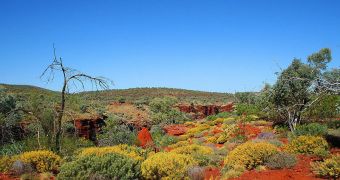Scientists from the Old Dominion University (ODU) announce the discovery of bacterial traces dating back to when the Earth was just around 1 billion years old. The finding was made as researchers were studying rock samples from the Pilbara region, in western Australia.
The bacterial remains were only preserved as a series of interesting textures on the surface of sandstones, the team explains. Since this material is relatively soft, bacterial colonies found it easy to sculpt it over time. When the colonies disappeared, their “work” remained behind.
The team, led by ODU biogeochemist Nora Noffke, says that the recently-discovered structures are the equivalent of a microbial city, where numerous species of bacteria coexisted and communicated with each other via a wide array of chemical signals.
Western Australia is not the only place in the world where such bacterial remnants can be encountered, the investigators say. Similar microbial cities can be found on Tunisia's coasts, for example, where bacteria used special chemicals to bind dust and sand particles to each other in clumps.
The Pilbara region – where the new study was conducted – was in fact a shoreline for an ancient ocean during the so-called Archean eon, which concluded nearly 2.5 billion years ago. The area was studied in 2007 and 2012, and revealed bacteria billions of years old.
“But [the new samples] are the best-preserved sedimentary rocks we know of, the ones most likely to preserve the really tiny structures and chemicals that provide evidence for life,” explains Louisiana State University biogeologist Maud Walsh, quoted by Daily Galaxy.
Nofke and her group were able to calculate the age of the bacterial remains by measuring the properties of carbon-13 isotopes within the samples, and comparing them to those of carbon-12 isotopes. The team was able to certify that the bacteria lived 3.49 billion years ago.
One of the most interesting discoveries in the new study was that the microorganisms in the sandstone may have been cyanobacteria, a group of microbes that is credited with contributing to the formation of Earth's oxygen-rich atmosphere, some 2.4 billion years ago.
The discovery of cyanobacteria in samples nearly 3.5 billion years old gives rise to new questions about how these organisms developed, and casts their influence on the planet's climate in a new light.
At the same time, the research also has implications for studies of Mars and its ability to support life. The NASA Curiosity rover discovered formations similar to those in ancient western Australia, suggesting that life may have been possible on our neighboring world.

 14 DAY TRIAL //
14 DAY TRIAL //